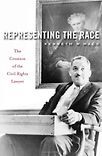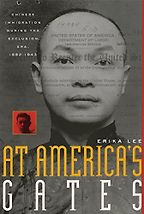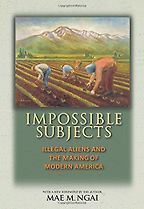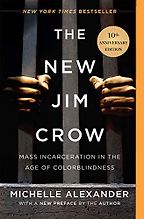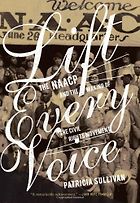Our topic, race and the law, sounds simple but becomes kaleidoscopic as soon as you look into it. The role of the law in the construction of race and the role of race in the construction of law are just the first two broad areas of exploration that come to mind. So, please orient us by expressing your view of the relationship between race and the law.
In the United States, scholarship on race and the law is inevitably tied to the history of the civil rights movement. The civil rights movement reoriented American law through landmark Supreme Court decisions such as Brown v. Board of Education, which interpreted the equal protection clause of the Constitution to bar segregation, and through the 1960s-era civil rights acts, which prohibited many types of discrimination in public and private life.
Scholarship on race and the law originally explored two questions that emerged from the civil rights movement. First: Did basic United States law – our written constitution, which was significantly amended after the Civil War – establish a racial hierarchy? Second: How did basic constitutional, statutory, and judge-made law help undo racial hierarchy? A generation of legal scholars, political scientists and historians, engaged with these questions. Now, however, we’ve moved on to some slightly different ones, as is reflected in some of my five book choices.
You examine the topic of race and the law in your collective biography of civil rights lawyers, Representing the Race. Please tell us about the book.
Traditional civil rights history and traditional race and the law scholarship tends to focus on struggles and social movements. My book tells the untold story of the men and women who played a crucial role in changing the United States from a nation that denied basic citizenship rights based on race into a nation that promotes racial equality as one of its core principles. The story of Brown v. Board of Education, and of the mostly black team of lawyers who helped establish that separate was not equal, is a story that Americans believe that they know but they don’t.
I’ve put a decade-plus of research into excavating the worlds of the men and women who helped establish the modern American ideal of racial equality. It includes famous lawyers, like future Supreme Court Justice Thurgood Marshall, as well as lawyers most readers won’t know. Take Marshall, for instance. When he stepped into a rural southern courtroom as chief lawyer of the NAACP, people didn’t know how to treat him. Should they treat him like any other black person – as a social inferior, with violence and perhaps lynching in store if he transgressed local racial mores? Or should they treat him like any other lawyer – like a white man? A similar set of tensions about identity manifested themselves in the lives of other lawyers.
“When he stepped into a rural southern courtroom as chief lawyer of the NAACP, people didn’t know how to treat him.”
Representing the Race is about the paradoxical nature of the demand that was continually made of these lawyers. Both blacks and whites demanded that they be representative of their race – resemble them and act like them – but at the same time that they be unlike their race, able to speak to the white community and navigate institutions of power. It’s a demand that is still made of prominent African Americans as different from one another as Clarence Thomas and Barack Obama.
What did you learn about the relationship between race and the law by writing it?
By looking at the civil rights struggle through the lives of black civil rights lawyers we learn about the contested nature of racial identity, even in an era where segregation was supposed to make race into something fixed, not fluid.
Political scientist Rogers Smith’s Civic Ideals, your first selection, seems to get at the heart of the way the law contributed to the construction of race in America. Please tell us about the book.
Rogers Smith argues that at the heart of American political culture, since even before the founding, there have been two warring ideals. One is the ideal of an egalitarian society, where everyone who arrives on our shores has relatively equal citizenship rights. According to this ideal, when those rights are denied it is an exception rather than the rule. This view of America is rooted in its founding rhetoric encompassed in the Declaration of Independence’s famous phrase, “all men are created equal”.
There is also an opposing ideal that American political culture has as its basis civic inequality. In his view America offers “ascriptive citizenship”, which means that access to rights, power and privileges are determined by race, gender, ethnicity and religion.
How does Smith’s distinction between egalitarian and ascriptive citizenship shed light on the relationship between race and the law?
Smith is responding to a classic question of race and the law scholarship. Is American law egalitarian at its core, or does American law impose a racial hierarchy? Smith sees both strains deeply embedded in American legal history. One can’t characterise American law as encompassing one of them without recognising the other. The main objective of the book is to demonstrate the tension between these warring ideals and show how it is reflected in law.
Does Smith identify the political reasons, obvious though they might seem, why the American legal system has historically helped construct societal hierarchies?
Smith is not as explicit as he might be on that score. One of the basic questions in “race and the law” scholarship asks is: What is the relationship between law and society? Do social attitudes affect the content of law, thus making law either more racist or more egalitarian as attitudes change? Is law affecting social attitudes? Is there some more complicated relationship between the two? These are contested questions for scholars; many people have argued about that topic during the past 30 years. I think Smith is agnostic about these questions. His book shows law in concert with social attitudes but doesn’t really offer an explicit answer to the question of causality.
An ascriptive law, the Chinese Exclusion Act of 1882, is the starting point for historian Erika Lee’s examination of what she calls America’s “exclusion era”. What would we learn by reading At America’s Gates?
Erika Lee wants to introduce readers to the fact that American law created and expanded a regime of exclusion from the country, based on race and nationality. She focuses on the Chinese Exclusion Act. The narrative that most Americans accept and learn in school is that American immigration was traditionally open and that everyone could come, as indicated by the often-quoted words from the Statue of Liberty. Lee wants you to know that for a significant group of people, identified by their race and country of origin, that has not been the case.
The second thing she wants to show us is how immigration law was invented. Immigrants may or may not have been treated well when they reached America, but there were few significant legal prohibitions on their admission to the country, aside from some health and safety regulations, prior to the Chinese Exclusion Act of 1882. So the source of modern federal immigration law – which limits and regulates immigration and imposes national quotas – lies in a statute that was passed to exclude a particular racial group from the country.
Lee’s reminder that American law was riddled with racial restrictions made me wonder: Aside from the bluntly titled Chinese Exclusion Act, what racial restrictions should be seared in our memory? Obviously, Jim Crow laws jump to mind. But give us a list of what we should never forget about race and American law.
We should never forget that the Chinese Exclusion Act was part of a larger effort to exclude entire groups from immigrating based on their race and nationality. Particular groups, generally from Asia, were singled out and excluded for over 50 years. That’s part of our history as much as the story of welcoming immigration that is taught in school. The second thing to learn is that it deeply affected the composition of America. Who’s American? What do Americans look like? These prohibitions helped cement into American culture the idea that only people who have a certain appearance are truly American.
One possible end point of Lee’s story is the Immigration Act of 1965. It adjusted the immigration quotas, which had restricted or prohibited immigration from certain countries. Those quotas, set in place in the early 20th century, were put in place to favour immigration from northern and western Europe. Because of the 1965 Act, the quotas were adjusted, which made it possible for more immigrants to come from, for instance, Asia. One can date the increased presence of Asian immigrants in the United States to that time.
We have now had governors of South Asian descent in South Carolina and Louisiana, Nikki Haley and Bobby Jindal, in part because the Immigration Act of 1965 helped change the colour of America. Slowly, over time, American expectations of what Americans could look like began to change as well. But the story doesn’t end there – we are having a related discussion today about the Americanness of newer immigrant groups.
Aside from the Chinese, which groups were explicitly excluded prior to 1965?
Most notably, the “Gentleman’s Agreement” of 1907, whereby Theodore Roosevelt’s administration and the Japanese government agreed to prohibit further immigration of labourers from Japan, and the Immigration Act of 1917, which established an exclusion zone that prohibited immigration from a substantial portion of Asia.
In fact, there are two sets of legal rules that were relevant in this area – rules that come under the rubrics of immigration and naturalisation law. Immigration law generally regulates the terms of admission to the country. Naturalisation law defines, among other things, who can become an American citizen after they arrive.
The first American naturalisation law was passed by the first Congress in 1790 – a Congress that included a significant number of the framers of the United States Constitution. That law limited naturalisation to what was called “free white persons”. The explicit racial restrictions on naturalisation weren’t completely lifted until the middle of the 20th century. So for most of American history, there was a basic assumption written into federal naturalisation law that the United States was a white person’s country, which raised the question of who was actually white – one that many judges wrestled with.
Non-whites could not naturalise, although for the most part their children would be American citizens if they were born here. This became very important during the World War II-era Japanese internment; when the assumption that American citizens and longtime US residents of Japanese descent were not truly Americans helped justify the internment. It was an assumption that influenced everyone from military officers to the Supreme Court justices who had to rule on the constitutionality of the internment.
In Impossible Subjects: Illegal Aliens and the Making of Modern America, Columbia history professor Mae Ngai takes up the two-sided question of how racism contributes to immigration laws and how immigration law contributes to racial constructs.
Mae Ngai helps us understand what we can learn from the history of the idea of an “illegal immigrant”. Before the Chinese Exclusion Act there were, for the most part, no illegal immigrants because there was very little immigration law. Lee’s book shows how an immigration bureaucracy was created and began to grow for the purpose of excluding Chinese immigrants. Ngai takes the story into the 20th century, and shows how the idea of the illegal migrant was invented, along with the construction of Mexican-Americans as illegals.
“Before the Chinese Exclusion Act there were, for the most part, no illegal immigrants because there was very little immigration law.”
Ngai wants you to understand, among other things, why and how Mexican-Americans came to represent the “illegal immigrant” in the American mind. For various reasons, immigration quotas and other political and demographic changes lessened the flow of migrants from Europe. But the United States still needed – as it does today – unskilled labour, and immigrants from Mexico began to fill that gap. At the same time, the immigration bureaucracy was reaching inside United States territory to identify illegal immigrants.
It is partly for this historically contingent reason that Americans attach an entirely different normative significance to recent Latino immigrants than they do to immigrants from the often romanticised period of immigration in the late 19th and early 20th centuries.
Lee and Ngai’s books establish that the tension between egalitarian and ascriptive ideas of American citizenship is extreme in the area of immigration law. Where else is this tension reflected in today’s law?
It’s being fought out today in the ongoing debate about changing American law to deny citizenship to the children of illegal immigrants. For over a century most Americans, including Supreme Court Justices, believed that the question of birthright citizenship had been settled. That debate is an extension of the controversy that emerged in the wake of the Court’s 1857 decision in Dred Scott v. Sandford, where Chief Justice Roger Taney ruled that no African American could be a United States citizen. (Taney’s decision was reversed by the 14th Amendment, which seemed to establish birthright citizenship.) That was a question that goes back to the founding, and to whether Americans created egalitarian or ascriptive citizenship. Over two centuries after the founding, we are still debating the basic question of what type of citizenship comports with core American values.
Let’s shift gears. Like your book, Patricia Sullivan’s Lift Every Voice reminds us that the law can be a tool for racial justice. Please tell us about this history of the National Association for the Advancement of Colored People [NAACP].
Sullivan’s book is a story that all Americans, and many people around the world, should know – the story of how we moved from a society whose basic law imposed a racial hierarchy to one where the basic principle, although not always complied with, is equality. She wants you to understand the true story of that change. Sullivan tells us how American law became egalitarian, and the story of the NAACP as a key actor in that process. The NAACP’s litigation programme resulted in Brown v. Board of Education.
The story of reform litigation is often told as the story of elite lawyers arguing before courts. Sullivan doesn’t just tell you about trials and appeals, she wants you to understand how much work it took on the local level, to produce a landmark Supreme Court victory. Local communities had to organise to support litigation, organisationally and financially. Lawyers had to solicit their support and strategise with community organisers. To get the Supreme Court to decide a case took effort that went all the way down to the grass roots of African American society, and to the white reformers who supported their efforts.
You and Sullivan both remind us how important litigation has been in reorienting American law. Some argue that the big questions in society should be left to the political process and that Supreme Court cases that reorient the law undermine democracy and support for the cause they advance. How does the fact that America has evolved into a more egalitarian society through litigation shape American society?
It has become fashionable to discount major court decisions – decisions such Roe v. Wade or Brown v. Board of Education, or the Warren Court’s criminal procedure decisions. There is a tendency to say that the decisions were not very effective, and that all they did was mobilise opposition and invite backlash.
One thing to keep in mind is that many of these cases had unexpected effects on American society. To give you one example, Dr Martin Luther King Junior was an unknown southern black minister until the Montgomery bus boycott catapulted him to national prominence. The boycott, where black Americans in Montgomery, Alabama, refused to ride segregated buses from 1955 to 1956, eventually forced local authorities to integrate the buses and helped set the stage for the civil rights protests of the 1960s.
What is less well known is that the boycotters also filed a lawsuit challenging Alabama’s bus segregation law. That suit reached the Supreme Court just as the local authorities were preparing to squelch the boycott, and the Court invalidated the bus segregation law in a short opinion that cited Brown as authority for the Court’s action. Many people argue that Brown did little to change American life, but without Brown the boycott arguably fails and a very important period in American history plays itself out differently from the history that is now familiar to all of us.
Litigation was intertwined with grassroots activism, as leaders like Martin Luther King knew quite well. There are many ways in which landmark Supreme Court decisions affect society. It’s important not to overlook that fact in an era when liberal Americans in particular have become pessimistic about law, and the Supreme Court.
So is your view that we should see activism and other means of achieving change as intertwined with, not opposed to, litigation?
That is one of the main points of Sullivan’s book and it is the reason I included it in the list. She shows you that NAACP, from its inception, understood how activism assisted litigation and how litigation could forward the cause of activists.
“Litigation was intertwined with grassroots activism, as leaders like Martin Luther King knew quite well. ”
They understood they had to mobilise all the way down to the grassroots to support a litigation programme, and that litigation could be a mobilising tool that would help them raise funds and establish local chapters. Sullivan also serves as a reminder that the egalitarian tradition among scholars of American citizenship is alive and well.
The New Jim Crow is your last pick. Law professor and former Supreme Court clerk Michelle Alexander argues “we have not ended racial caste in America; we have merely redesigned it”. Please tell us how she makes her case.
Michelle Alexander begins by reminding us that there used to be laws and statutes that said if you were African American you had a different set of voting rights than other Americans, a different set of unemployment rights than other Americans, and differentiated citizenship rights in many other areas. Many of the basic freedoms we now take for granted were explicitly circumscribed by law.
Today, according to Alexander, although we have a purportedly colourblind society, the same thing is happening. But today it is done by imposing differentiated citizenship rights on convicted felons. Because of the war on drugs, according to Alexander, a disproportionate number of convicted felons are black. For example, in many states felons are stripped of the right to vote. So, in her view, we have a system that resembles and is related to the old Jim Crow system of law, but we can’t see this because the “New Jim Crow” doesn’t base its prohibitions explicitly on race.
How does American law and society discriminate against felons?
Under American law, only discriminations based on protected categories are prohibited. Those categories are: Race, gender, religion, disability, nationality, and to a much lesser extent sexual orientation. If I want to discriminate against people wearing red shirts, for the most part that discrimination will receive very little scrutiny under American law. Alexander points out that because felons don’t fall into any of the statutory categories that prohibit discrimination, it is perfectly permissible and quite common to discriminate against people who have been to prison.
She wants us to see that the people who are in the category of felon, particularly drug offenders, are disproportionately of one race – African American. She reminds us that if we explicitly prohibited a large number of black Americans from voting, or explicitly exempted a large number of African Americans from anti-discrimination laws, we would all see those actions as immoral and illegal. She shows us that American society is doing something indirectly that would be unconstitutional if done directly.
Is Alexander arguing that the mass incarceration and its legacy is part of a plan to maintain a racial caste system, rather than the result of neutral state action?
Alexander says very explicitly in the introduction of her book that the system of Jim Crow has simply reasserted itself in different form. She doesn’t say why. I’d be surprised if she believes that there is a conspiracy to do this. I interpret Alexander as saying that there is a marked indifference to the basic citizenship rights of African Americans. That indifference allows our society to accept laws that would not be accepted if the people who were being disproportionately disfranchised were white. That is how I would characterise what she’s saying. Her book is also a strongly argued example of scholarship that views the American citizenship tradition as inegalitarian at its core.
You edited a collection about race entitled The New Black: What Has Changed – and What Has Not – with Race in America. Please give us a preview – what has changed and what has not?
The New Black is a series of forward-looking essays by legal scholars, political scientists, sociologists, historians, all of whom are trying to forecast and think through newly-emerging questions in race relations. In the 21st century, how should we think through race and politics? How should we think about the Voting Rights Act, and its continued role in American politics? How, if at all, should we modify civil rights laws? How should we write history differently? How should we rethink accepted debates, analyses and categories in light of the fact that we live in a very different era of race relations than existed in the sixties, seventies and eighties, when much our current thinking on this subject was formed?
Let’s look forward. If the subjects of Representing the Race were practicing in the 21st century, would they be filing suit to combat felon disenfranchisement? Should 21st century civil rights lawyers focus on the felon rights?
Discrimination against people who have been part of the penal system is a problem with incredibly widespread repercussions, whether or not one agrees with Alexander’s argument in The New Jim Crow. Its importance probably dwarfs those of all the other civil rights issues of today. We need to find alternatives to incarcerating a large class of our citizens and giving them little opportunity to become responsible members of society, even upon release. We want those who have been in the penal system to have the chance to reestablish their basic citizenship rights.
It’s an incredibly complicated problem of law, morality, and public policy of course. There are no easy answers. But if I were a civil rights lawyer looking to attack systematic inequality in the 21st century, this is an issue that would be at the top of my list.
This interview was published on April 23rd, 2012
Five Books aims to keep its book recommendations and interviews up to date. If you are the interviewee and would like to update your choice of books (or even just what you say about them) please email us at editor@fivebooks.com
Five Books interviews are expensive to produce. If you've enjoyed this interview, please support us by donating a small amount.

